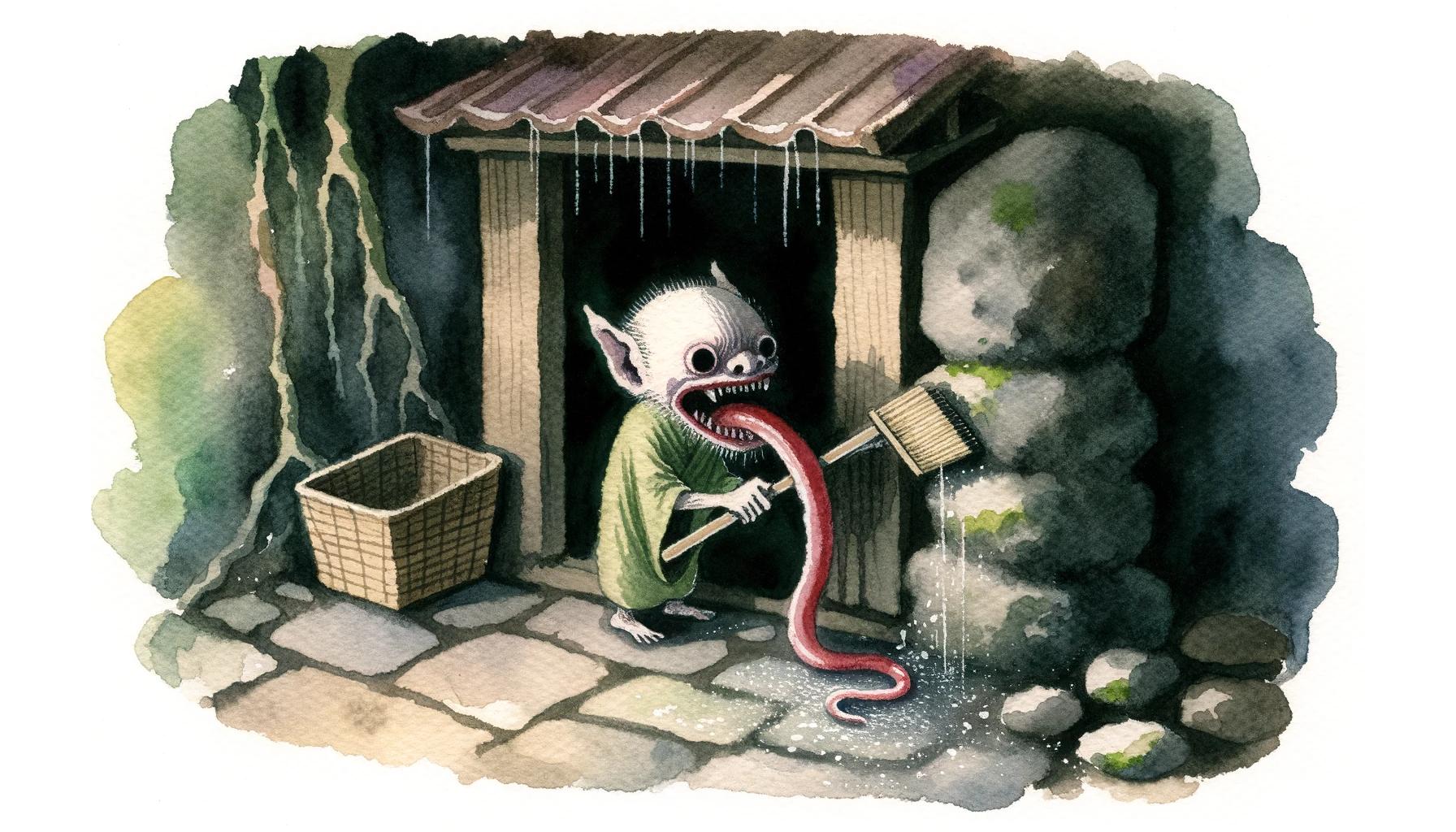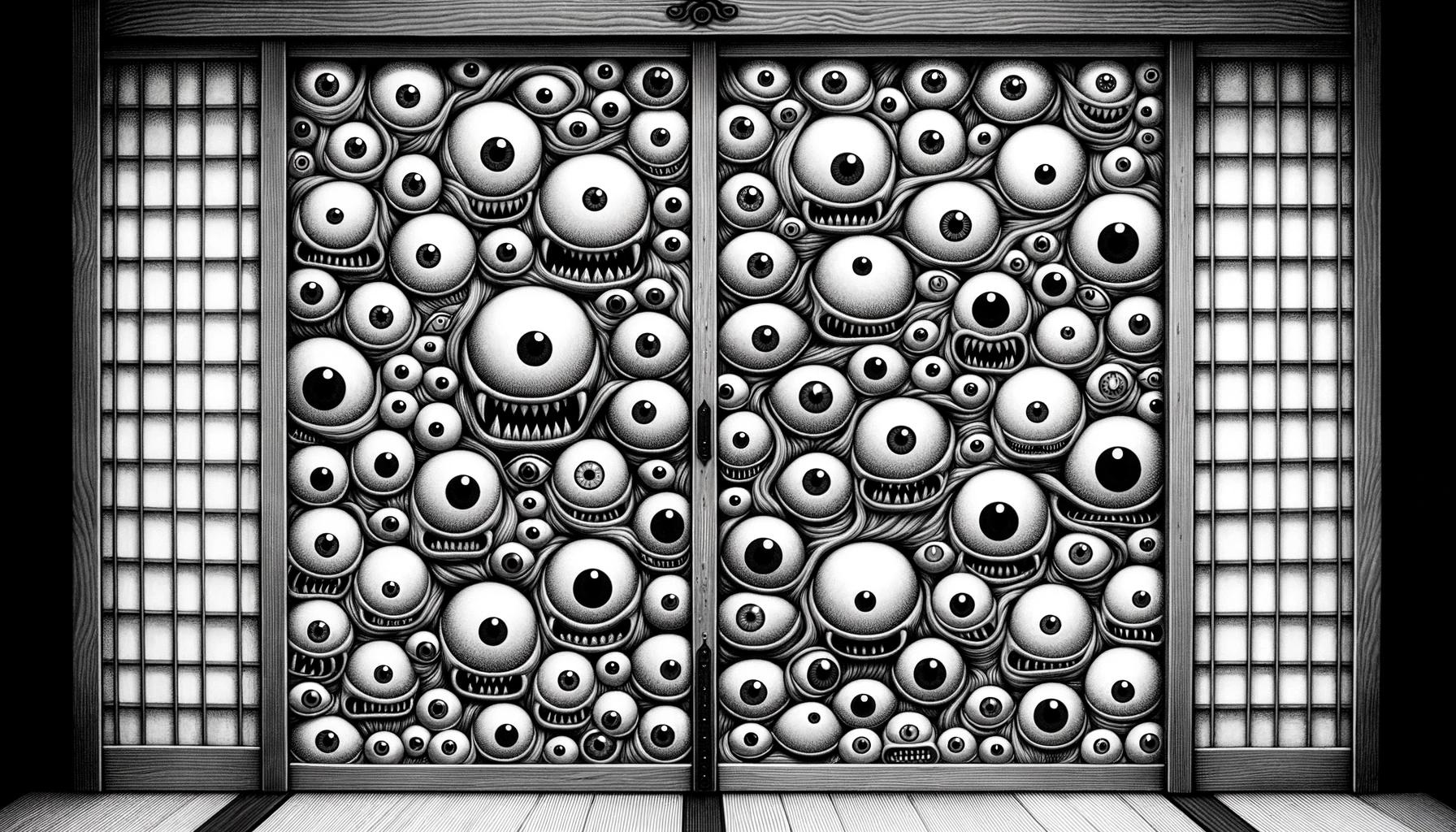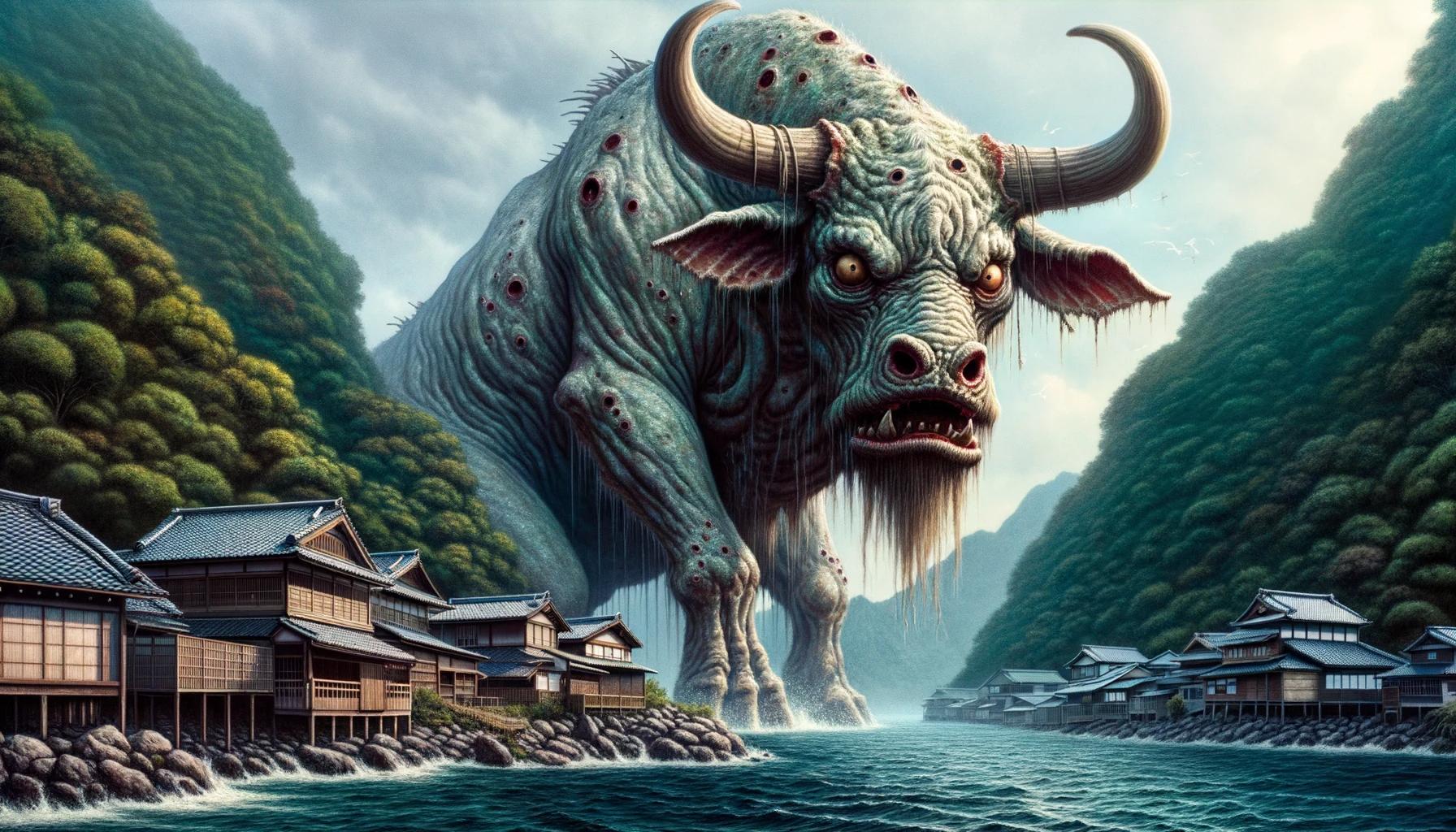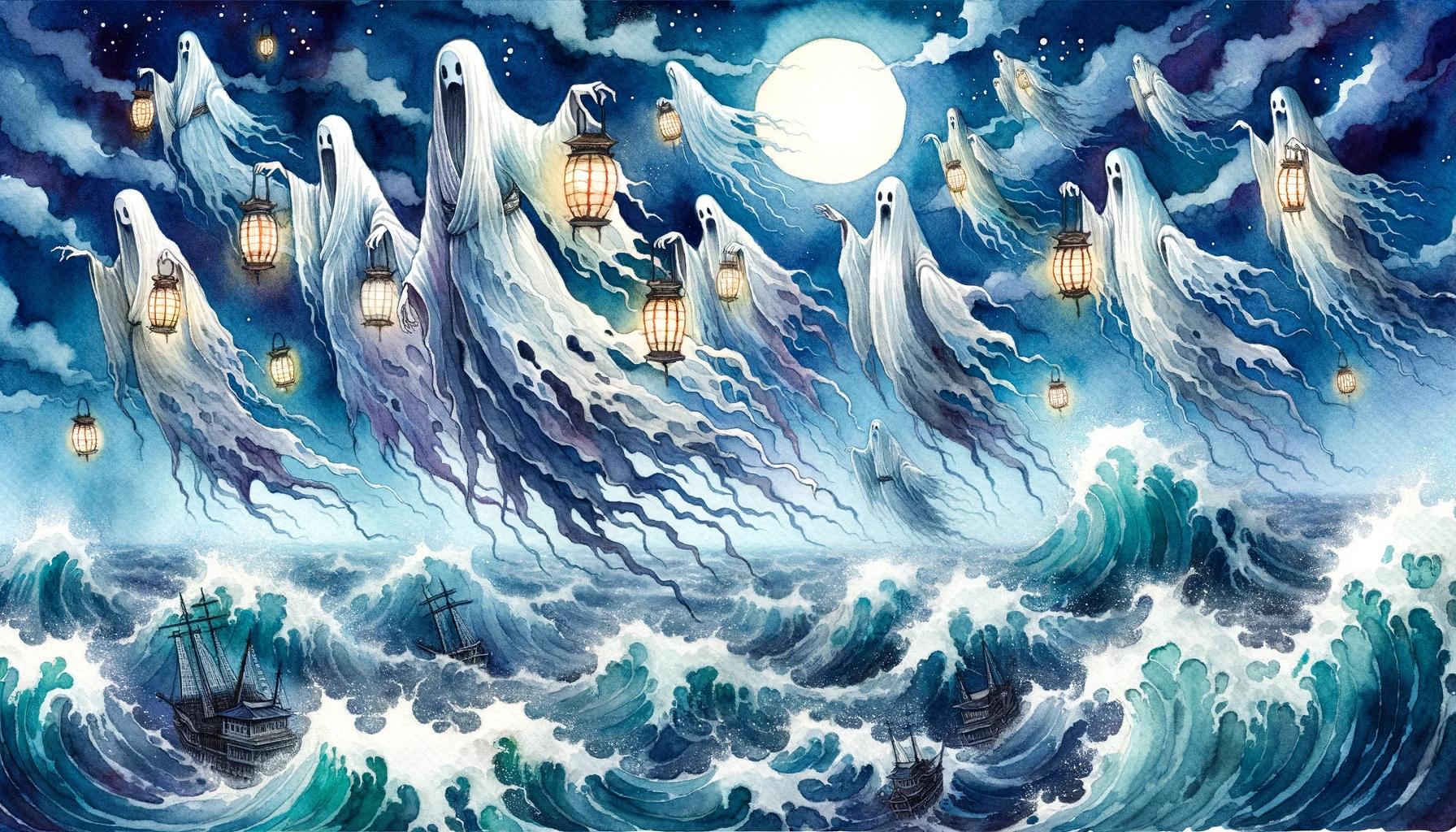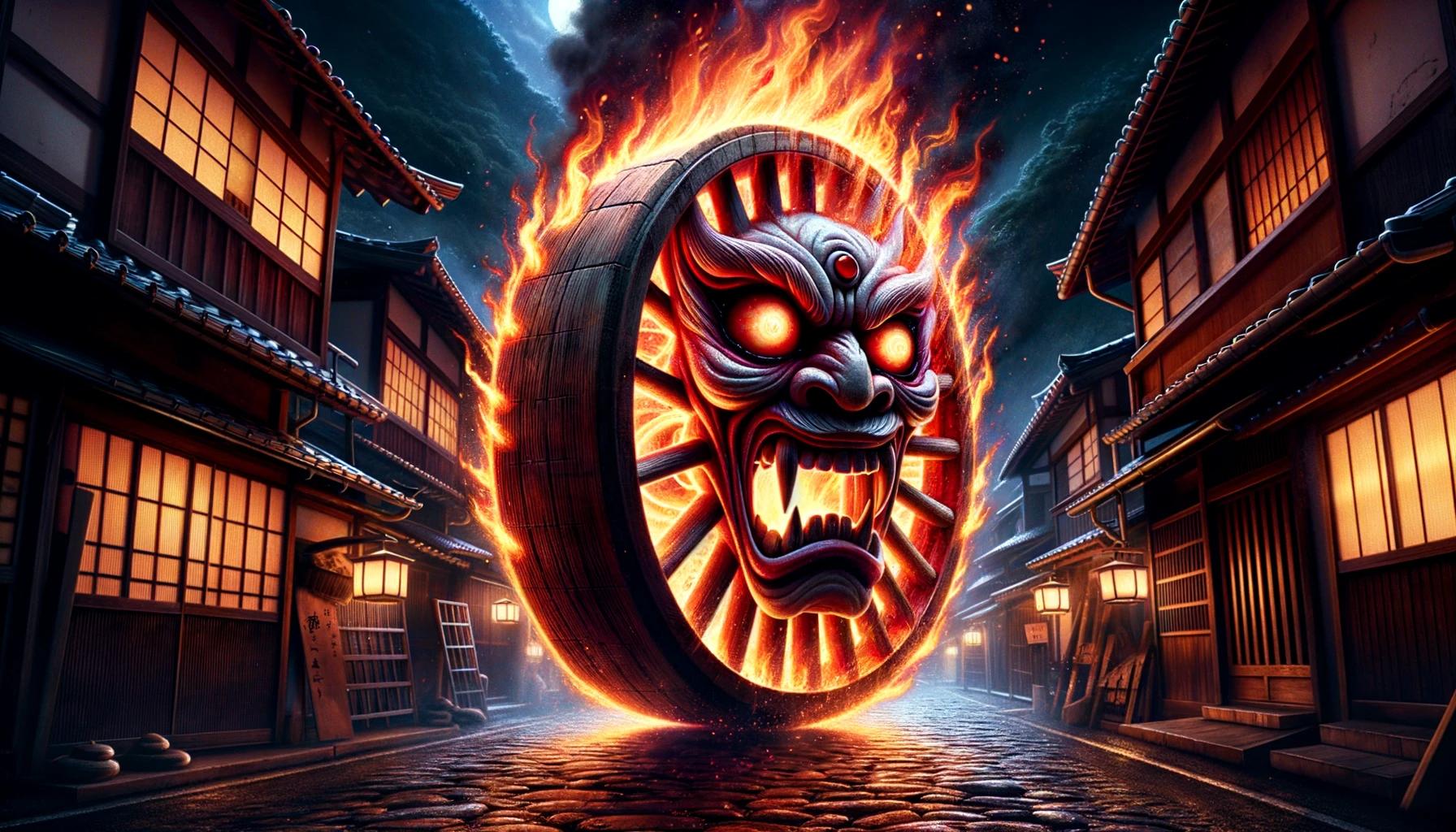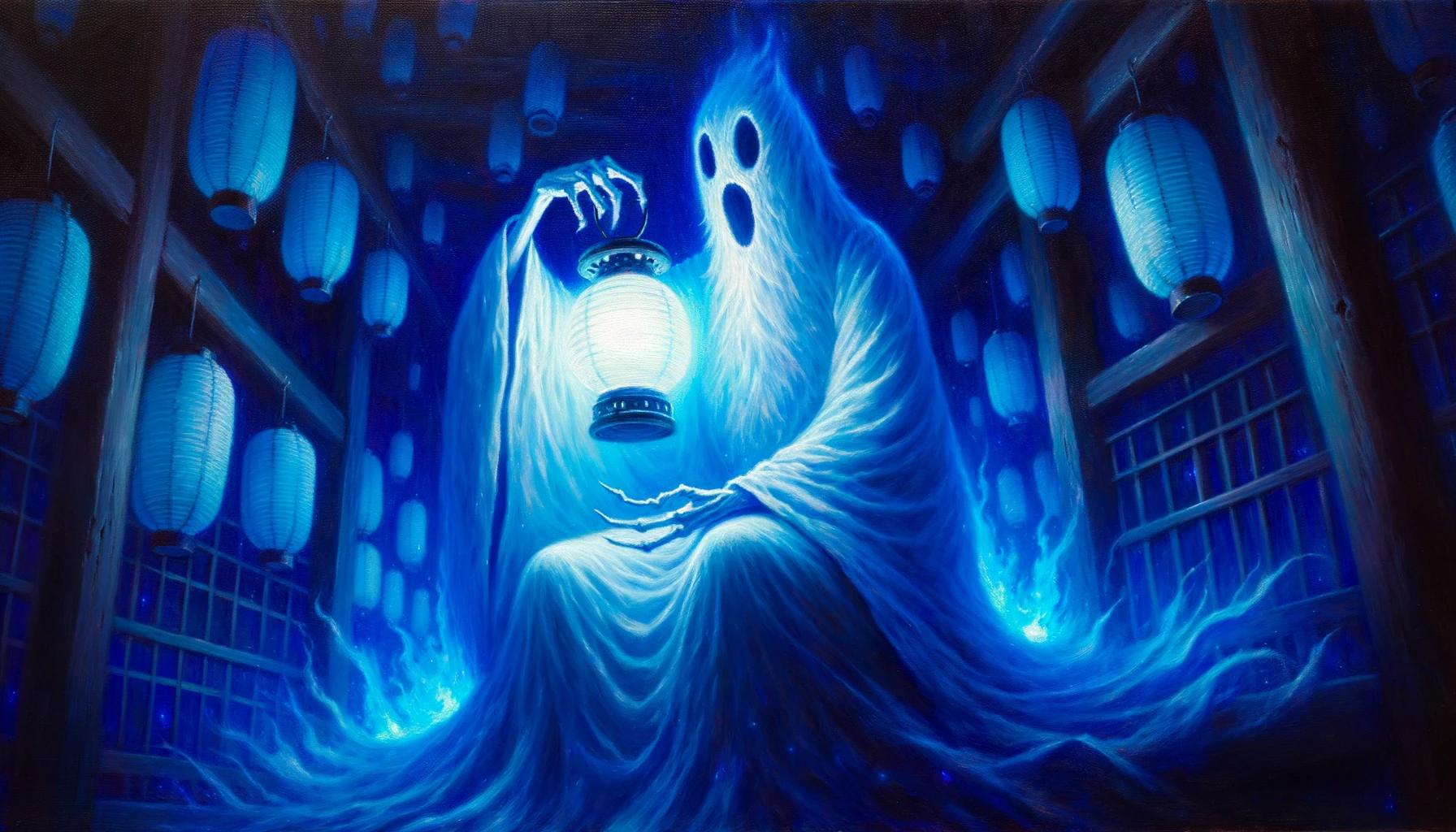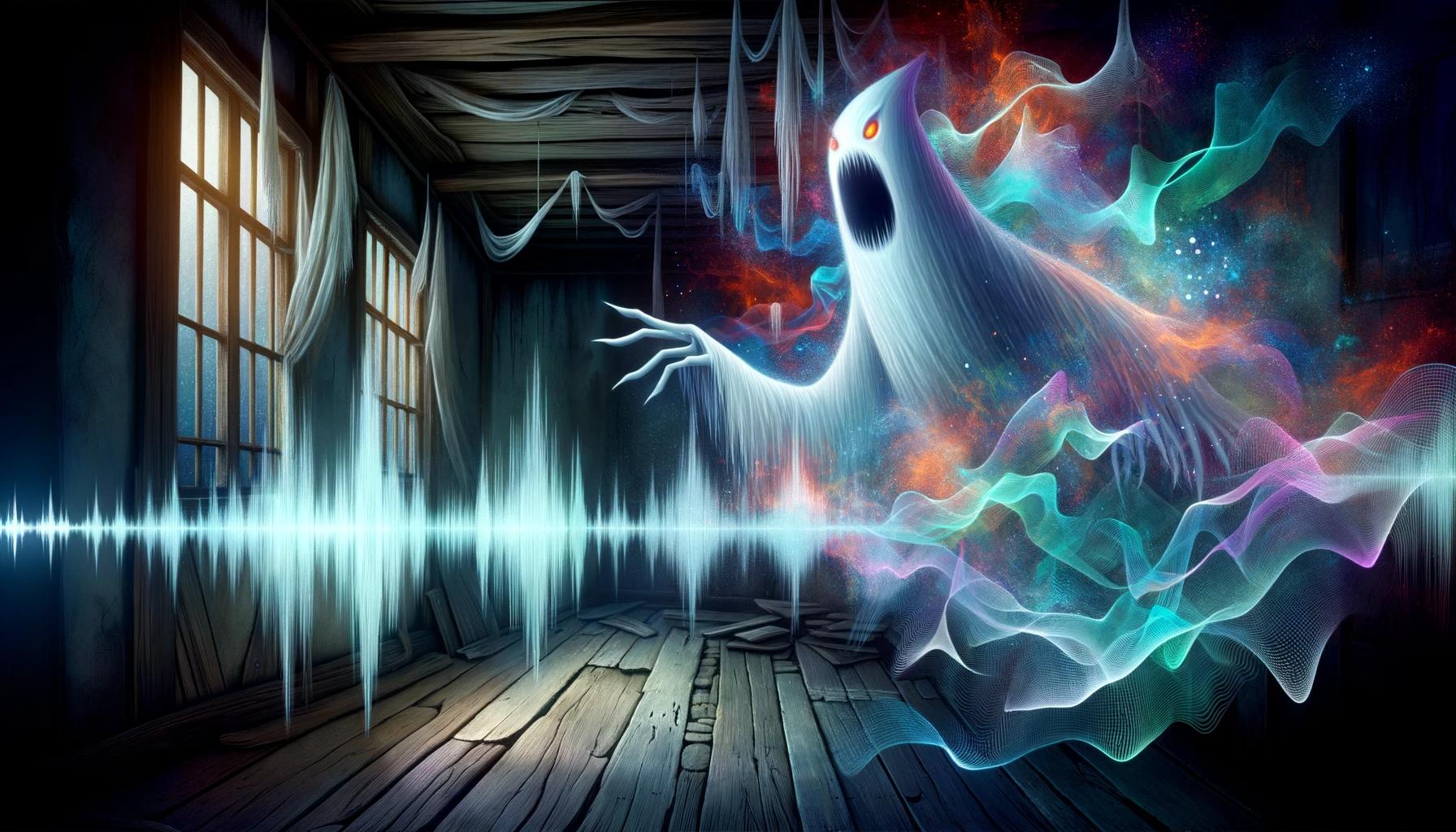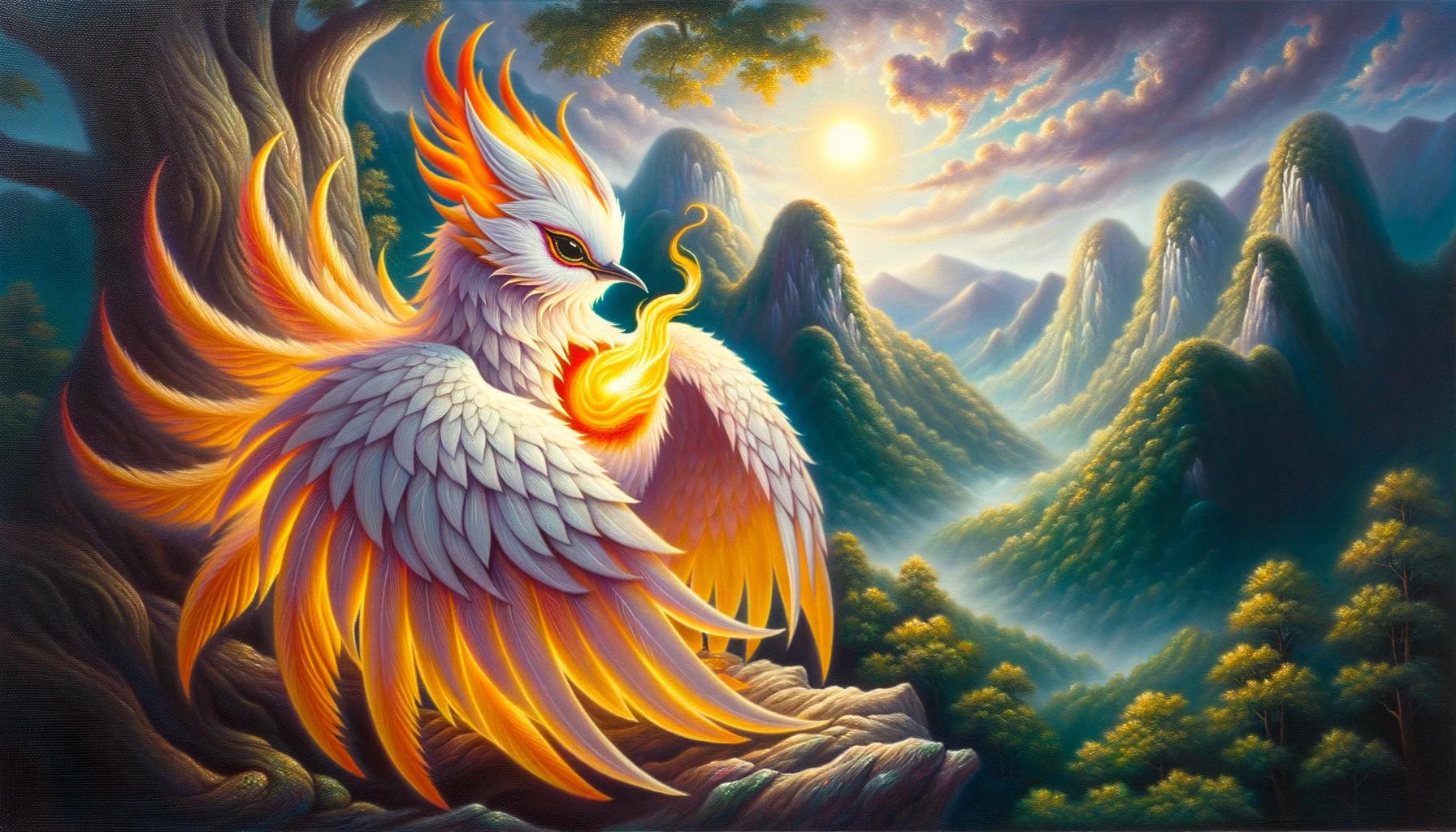Akaname Yokai: Unveiling the Supernatural Creatures of Filth and Mystery
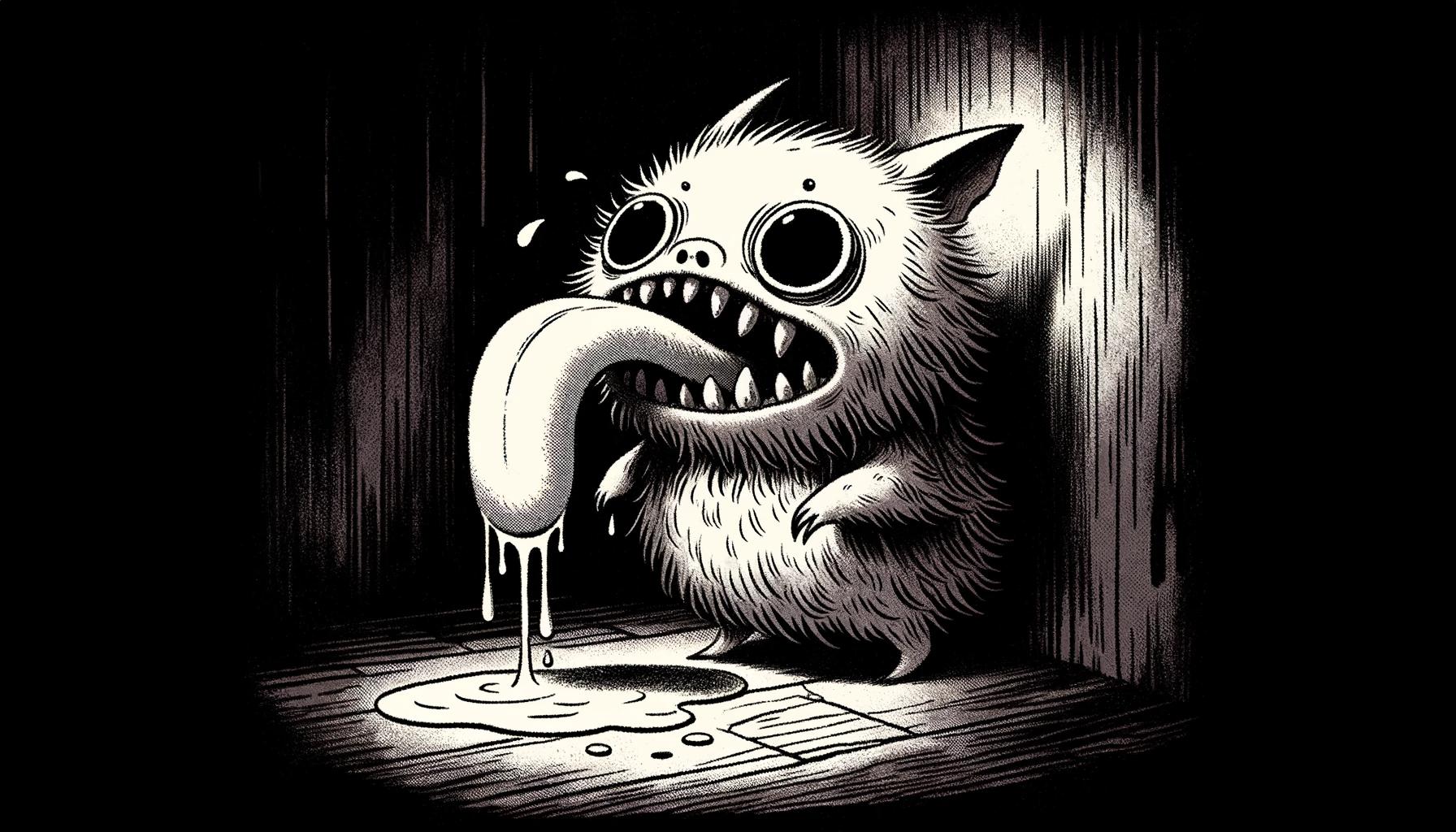
The Akaname Yokai, known for its appearance in Japanese literature and popular culture, is a mysterious supernatural creature that dwells in filthy and neglected places, such as dirty bathrooms and abandoned houses.
Feeding on mud, mold, grime, hair, and other human waste, this small, goblin-like creature with greasy hair and oily skin is believed to have a grotesque and unsettling appearance. In this article, we will delve into the origins, physical characteristics, behavior, and cultural impact of the Akaname Yokai, as well as its connection to cleanliness and hygiene.
The Akaname Yokai: Unveiling the Mysterious Supernatural Creatures
The Akaname Yokai, originating from Japanese folklore, is a captivating and enigmatic creature that has intrigued people for ages. In this section, we delve into the origins, physical appearance, and behavior of these supernatural beings, shedding light on their fascinating nature.
Origins and History of the Akaname Yokai
The Akaname Yokai finds its roots in the rich history of Japanese folklore. Dating back centuries, these creatures were first mentioned in the 1776 book ‘Gazu Hyakki Yagyō’ by Toriyama Sekien.
The book portrays the Akaname as a creature tasked with licking the accumulated dirt in bathtubs and bathrooms. Over time, their legend spread, gaining prominence in various literary works and becoming a part of Japanese cultural lore.
Physical Appearance and Characteristics of the Akaname Yokai
The Akaname Yokai’s physical features are both intriguing and unsettling. Resembling a small goblin-like creature, their size may vary, but their hunched posture gives them an even smaller appearance. They possess a greasy and sticky mop of hair on their heads, naked bodies with oil-coated skin, and a range of colors – from dark green reminiscent of mold to a pinkish-red shade resembling bedsores.
With one or two eyes and up to five fingers on their hands and feet, they all share an extremely long and sticky tongue.
Behavior and Habitat of the Akaname Yokai
Akaname Yokai exhibit behavior similar to pests such as cockroaches or rats.
They despise clean and well-maintained homes, appearing only in places where owners lack discipline and cleanliness. Their preferred habitats include filthy and neglected environments, such as dirty bathrooms, grimy toilets, and abandoned houses.
Here, they indulge in their peculiar diet, feeding on mud, mold, grime, hair, and other human waste.
By uncovering the origins, physical attributes, and behavior of Akaname Yokai, we gain a deeper understanding of these intriguing supernatural creatures.
Their presence in Japanese folklore and popular culture continues to captivate and leave a lasting impression on those curious about the mysterious world of yokai.
Exploring the Yokai World: Akaname and Other Supernatural Entities
Understanding Different Types of Yokai
Yokai, a broad category of supernatural beings in Japanese folklore, encompasses various creatures with unique traits and characteristics.
These entities range from mischievous spirits to vengeful ghosts and everything in between. Some well-known types of yokai include Kitsune (fox spirits), Tengu (bird-like creatures), and Kappa (water imps).
Each type of yokai has its own folklore, abilities, and cultural significance.
Yokai Folklore and Cultural Significance in Japan
Yokai folklore plays a significant role in Japanese culture, reflecting societal beliefs, fears, and values. Their presence can be traced back to ancient times, where they served as explanations for natural phenomena or as cautionary tales.
Yokai are often depicted in Japanese art, literature, and theater, showcasing their enduring influence on the country’s artistic heritage. They also represent cultural values such as respect for nature, the importance of balance, and the supernatural elements intertwined with everyday life.
Traditional Yokai Tales
Japanese folklore and literature are rich with tales featuring yokai, capturing their intriguing and sometimes whimsical nature. Stories like “Tales of Moonlight and Rain” by Ueda Akinari and “The Night Parade of One Hundred Demons” (Hyakki Yagyō) depict yokai in various scenarios, highlighting their interactions with humans and their impact on the natural world.
Yokai in Contemporary Culture
Yokai continue to thrive in modern Japanese culture, appearing in literature, anime, manga, and video games. The popularity of franchises like “GeGeGe no Kitaro” and “Yo-kai Watch” further showcases the enduring fascination with yokai.
These portrayals often blend traditional folklore with contemporary storytelling, introducing yokai to new generations and a global audience.
- The Influence of Yokai in Anime and Manga
- Yokai-themed Video Games and Merchandise
- Yokai-inspired Art and Fashion
- Yokai Festivals and Cultural Events
The exploration of the yokai world allows us to delve into the rich tapestry of Japanese folklore, uncovering the intriguing stories, traditions, and cultural significance associated with these supernatural entities.
(Note: The above information is based on the understanding of yokai in Japanese culture as of 2023 and does not include any future developments or changes.)
Akaname Yokai in Popular Culture: From Literature to Media Adaptations
The presence of the Akaname Yokai can be felt across various forms of popular culture, from literature to film, TV, and anime.
Its unique characteristics and eerie nature have captured the imagination of artists and storytellers, resulting in its inclusion in numerous creative works.
Akaname Yokai in Literature and Art
The Akaname Yokai has made appearances in Japanese literature, both traditional and contemporary. Its role in these literary works often emphasizes its connection to uncleanliness and impurity. Authors have portrayed the Akaname Yokai as a symbol of neglected spaces and the need for cleanliness in society.
Furthermore, artists have depicted the Akaname Yokai in various forms of visual art. Its grotesque appearance, with greasy hair and oily skin, lends itself well to artistic interpretations. Paintings, drawings, and sculptures have captured the essence of the Akaname Yokai, showcasing its eerie presence in the realm of visual arts.
Akaname Yokai in Film, TV, and Anime
The Akaname Yokai has also found its way into the world of film, TV, and anime, captivating audiences with its unsettling nature. Filmmakers and animators have embraced this mythical creature, incorporating it into their storytelling to add an air of mystery and horror.
In movies and TV shows, the Akaname Yokai often appears as a malevolent creature lurking in the shadows, ready to strike fear into the hearts of those who cross its path.
Its grotesque features and association with unsanitary environments make it a compelling antagonist or a catalyst for suspenseful plotlines.
Similarly, anime creators have incorporated the Akaname Yokai into their narratives, building its character within fantastical worlds.
Whether as a menacing presence or a mysterious guide, the Akaname Yokai’s inclusion in anime adds depth and intrigue to the overall storyline.
Overall, the presence of the Akaname Yokai in literature, art, film, TV, and anime showcases its enduring popularity and its ability to evoke fear and fascination in audiences.
Its inclusion in popular culture speaks to its status as a captivating supernatural entity, shrouded in the mysteries of Japanese folklore.
Common Misconceptions and Myths Surrounding the Akaname Yokai
Debunking Myths and Misunderstandings
There are several misconceptions and myths that surround the Akaname Yokai, often leading to misunderstandings about its true nature and characteristics. Let’s explore and debunk some of these misconceptions:
- Myth: Akaname Yokai are dangerous and harmful creatures.
Contrary to popular belief, Akaname Yokai are not known to cause any harm or pose a direct threat to humans. While their appearance may be unsettling, they primarily feed on dirt and filth, not on people or animals.
- Myth: Akaname Yokai can be found in every filthy location.
While Akaname Yokai are associated with dirty environments, they are not present in every neglected or unclean place. Their presence is more commonly found in specific locations such as dirty bathrooms, neglected houses, and public restrooms.
- Myth: Akaname Yokai are evil or malevolent beings.
Despite their eerie appearance, there is no evidence to suggest that Akaname Yokai possess malicious intentions. They are simply creatures that thrive in unclean environments, and their behavior is driven by their need to feed on dirt and waste.
Clarifying Popular Beliefs about Akaname Yokai
Clarifying misconceptions is essential to gain a better understanding of the Akaname Yokai.
Here are some common beliefs that need to be clarified:
- Belief: Akaname Yokai are supernatural entities that only exist in Japanese folklore. While the Akaname Yokai originated from Japanese folklore and mythology, their existence is purely mythical.
There is no concrete evidence to suggest that they are real creatures.
- Belief: Akaname Yokai are omens of bad luck or misfortune. Despite their association with uncleanliness, Akaname Yokai are not considered omens of bad luck or misfortune in Japanese culture.
They are simply creatures that inhabit dirty environments and have no direct influence on one’s fortune or luck.
- Belief: Akaname Yokai can be controlled or summoned by certain rituals or practices.
There is no documented evidence to support the idea that Akaname Yokai can be controlled or summoned through rituals or practices. They are independent creatures that inhabit specific environments based on their natural inclination towards filth and dirt.
By dispelling these misconceptions and clarifying popular beliefs, we can develop a more accurate understanding of the Akaname Yokai and appreciate its significance within Japanese folklore and popular culture.
Akaname Yokai and Its Impact on Modern Society
The Akaname Yokai has made a lasting impact on modern society, leaving its mark on various aspects such as literature, art, and popular culture. Let’s explore how this supernatural creature has influenced these domains:
Influences on Literature, Art, and Popular Culture
The Akaname Yokai has been a source of inspiration in literature, with its grotesque and unsettling appearance often depicted in horror stories and fantasy novels.
Authors have used its concept to create intriguing and spine-chilling narratives that captivate readers. Artists have also embraced the Akaname Yokai, incorporating its distinct features into their illustrations and paintings, showcasing both its repulsive and fascinating qualities.
Additionally, in popular culture, this creature has appeared in various forms, from memorable characters in films and TV shows to being featured in anime and manga series.
Akaname Yokai and Environmental Awareness
Beyond its cultural impact, the Akaname Yokai sheds light on the importance of cleanliness and hygiene.
Its disdain for well-kept homes serves as a reminder of the consequences that neglecting proper sanitation can have on our surroundings. This yokai serves as a symbol of the need for environmental awareness and responsible waste management.
It encourages individuals to maintain cleanliness not only for aesthetic reasons but also for the sake of public health and the preservation of our natural environment.
- The Akaname Yokai’s role in literature and its influence on storytelling
- The use of Akaname Yokai’s distinct features in visual arts and its impact on artistic expression
- Akaname Yokai’s presence in popular culture, including films, TV shows, anime, and manga
- The connection between Akaname Yokai and promoting cleanliness and hygiene
- Akaname Yokai’s significance in raising environmental awareness and responsible waste management
In conclusion, the Akaname Yokai has left a significant imprint on modern society through its influences on literature, art, and popular culture.
Furthermore, it serves as a reminder of the importance of cleanliness and hygiene, while also promoting environmental awareness and responsible waste management.
FAQs: Answering Your Most Common Questions about Akaname Yokai
What Are the Origins of the Akaname Yokai?
The origins of the Akaname Yokai can be traced back to the book ‘Gazu Hyakki Yagyō’ by Toriyama Sekien, published in 1776.
Within the book, the Akaname is depicted as a creature that licks the accumulated dirt in bathtubs and bathrooms. Its name translates to ‘dirt licker’ and is believed to have a red face or body, symbolizing impurities and worldly desires.
While no one has truly seen an Akaname, it is considered to have a creepy and disturbing appearance.
How Does the Akaname Yokai Look and Behave?
The Akaname Yokai is a small creature that resembles a goblin. It varies in size but appears even smaller due to its hunched posture. It has a greasy and slimy mane of hair, with a naked body covered in oily skin.
Its coloration can range from dark green reminiscent of mold to a reddish-pink color resembling bedsores. Some Akaname have one or two eyes and can possess between one and five fingers on their hands and feet.
They all share an extremely long and sticky tongue, which they use to relish in saliva, grease, hair, and other debris found in public toilets and behind toilets.
In terms of behavior, Akaname exhibit characteristics similar to pests like cockroaches or rats.
They despise clean and well-maintained homes and only appear in places where owners completely lack discipline and cleanliness.
Are Akaname Yokai Real or Just Mythical Creatures?
The Akaname Yokai is considered a mythical creature from Japanese folklore. While there are no concrete evidence or sightings to prove their existence, their presence in literature, art, and popular culture has solidified their status as a legendary entity.
However, it is crucial to note that folklore and mythology often blend with reality, blurring the boundaries between the physical and the spiritual.
What Is the Significance of the Akaname Yokai in Japanese Culture?
The Akaname Yokai holds significance in Japanese culture as it symbolizes the importance of cleanliness and hygiene.
Its aversion to clean environments serves as a reminder for people to maintain cleanliness in their surroundings, particularly in places like bathrooms. It also highlights the idea that neglecting cleanliness can attract undesirable entities or pests.
Can Akaname Yokai Cause Harm or Have Any Benefits?
While the Akaname Yokai may seem creepy and unsettling, there are no specific accounts of it causing direct harm to humans. Instead, its presence serves as a reminder of the importance of cleanliness and hygiene.
By detesting filthy environments, the Akaname emphasizes the need for proper sanitation practices and the benefits of maintaining a clean and healthy living space.
Fan Feed: Exploring Related Yokai Creatures and Entities
In the fascinating world of Yokai, there are numerous intriguing creatures and entities that capture our imagination.
Let’s delve into some of these fascinating beings:
Dōji, the Mischievous Yokai Children
Dōji are mischievous children-like Yokai known for their playful and sometimes prankster nature. They often appear as innocent-looking children, but they possess supernatural abilities and can cause quite a ruckus. Legends describe them as tricksters who enjoy pulling pranks on unsuspecting humans.
Tanuki, the Shapeshifting Yokai of Japanese Folklore
Tanuki, also known as the raccoon dog, is a well-known and beloved Yokai in Japanese folklore. These mischievous creatures possess the ability to shape-shift into various forms, often taking the appearance of humans or everyday objects.
They are associated with good fortune, wealth, and plentiful harvests.
Akago and Other Supernatural Beings in Japanese Mythology
Akago refers to supernatural beings, often depicted as infants or young children. These entities possess otherworldly powers and are believed to bring both blessings and misfortune. They are often associated with spiritual guardians or messengers, and their presence can signify significant events or changes.
Bakemono and Their Intriguing Role in Yokai Folklore
Bakemono are a diverse group of Yokai entities known for their shape-shifting abilities and eerie appearances. They can transform into various creatures or objects, sometimes even taking on the form of inanimate objects come to life.
Bakemono are often associated with haunted places and strange occurrences.
Azuki, Yūrei, Nure Onna, and Other Yokai Spirits
Within the vast realm of Yokai lore, there are numerous spirits and entities that capture our fascination. Azuki are small bean-like spirits that bring good fortune, Yūrei are vengeful spirits of the deceased, and Nure Onna is a snake-like Yokai known for luring unsuspecting victims.
These Yokai spirits and entities add depth and richness to the world of Japanese folklore.
From mischievous Dōji to shape-shifting Tanuki, and from enigmatic Akago to haunting Bakemono, the world of Yokai is filled with intriguing creatures and entities that continue to captivate our imaginations.
Akaname Yokai and Pest Control: Detesting Clean and Well-Kept Homes
Exploring the Link Between Akaname Yokai and Dirty Environments
The Akaname Yokai, notorious for its preference in inhabiting dirty and neglected spaces, detests clean and well-kept homes. This supernatural creature thrives in environments like filthy bathrooms, grimy toilets, and abandoned houses, where it finds ample sources of sustenance in mud, mold, grime, hair, and other human waste.
Its appearance, resembling that of a small gremlin-like creature, is unappealing and unsettling.
The Impact of Dirty Environments on Akaname Yokai Presence
- Akaname Yokai, often associated with neglect and lack of discipline in maintaining cleanliness, thrives in places where owners disregard proper hygiene.
- Its aversion to clean homes suggests that regular cleaning and maintenance serve as an effective deterrent to its presence.
- Akaname Yokai’s affinity for unclean environments highlights the importance of regular cleaning practices to discourage its appearance and preserve a hygienic living space.
The Importance of Proper Hygiene and Cleanliness
Proper hygiene and cleanliness play a significant role not only in deterring Akaname Yokai but also in maintaining a healthy and pleasant living environment.
By practicing good hygiene and cleanliness, individuals can:
- Prevent the accumulation of dirt, grime, and other substances that attract Akaname Yokai and potentially other pests.
- Reduce the risk of harmful bacteria, molds, and other pathogens that thrive in unclean conditions.
- Improve overall well-being and physical health by promoting cleanliness and a sanitized living space.
- Create a welcoming and comfortable atmosphere that contributes to mental and emotional well-being.
Investing time and effort into maintaining cleanliness and practicing proper hygiene not only helps keep unwanted creatures like Akaname Yokai at bay but also promotes a healthier and more enjoyable living environment for individuals and their families.
Akaname Yokai and Other Pests: Examining Similarities and Differences
In this section, we will delve into the intriguing world of yokai creatures and other pests, exploring the similarities and differences they share with the Akaname Yokai. We will also examine the impact these creatures have on the environment and the importance of cleanliness and hygiene.
Akaname Yokai’s Disdain for Cleanliness and Hygiene
The Akaname Yokai is notorious for its preference for dirty and neglected environments. It thrives in places lacking proper cleanliness and hygiene. In contrast to pests like cockroaches or rats, which are attracted to dirt and filth, the Akaname Yokai goes a step further by actively seeking out such environments to feast on mud, grime, and other human waste.
Its presence serves as a reminder of the importance of maintaining a clean and hygienic environment to avoid attracting these unwanted creatures.
Understanding Other Yokai and Creatures Associated with Dirt and Filth
Besides the Akaname Yokai, there are several other yokai and creatures in Japanese folklore that are associated with dirt and filth.
Some of these include the Dōji, mischievous yokai children who are often depicted causing havoc in dirty houses, and the Bakemono, creatures that take on grotesque forms and are believed to haunt unclean areas.
It is fascinating to explore the different characteristics and cultural significance of these creatures and gain a deeper understanding of their role in Japanese folklore.
The Impact of Akaname Yokai and Other Pests on the Environment
The presence of the Akaname Yokai and other pests can have a significant impact on the environment.
Their preference for dirty and neglected spaces highlights the importance of maintaining a clean and healthy living environment. Not only do these creatures pose potential health risks, but they also contribute to the spread of diseases and can damage property.
Understanding their impact and taking proactive measures to prevent their presence can help create a safer, healthier, and more sustainable environment.
.











